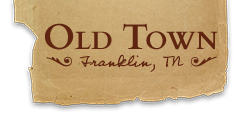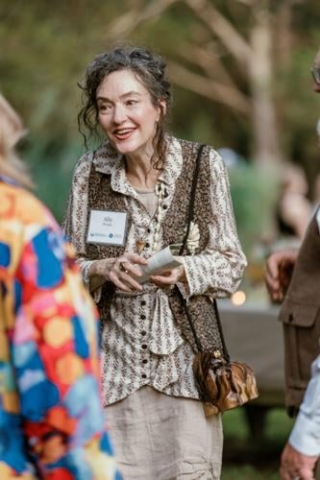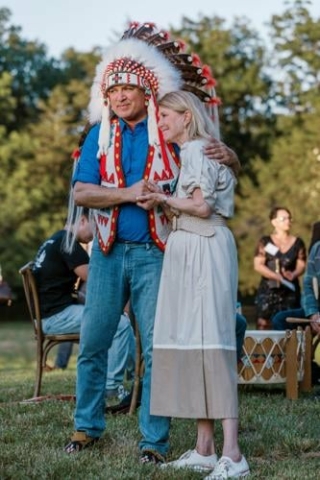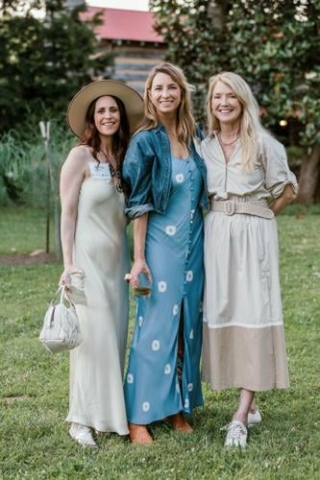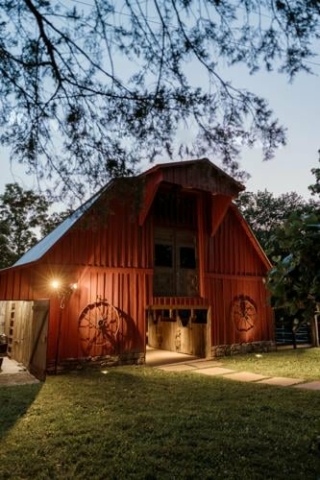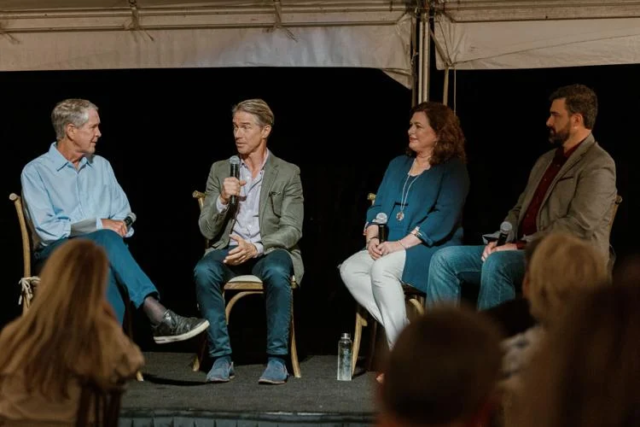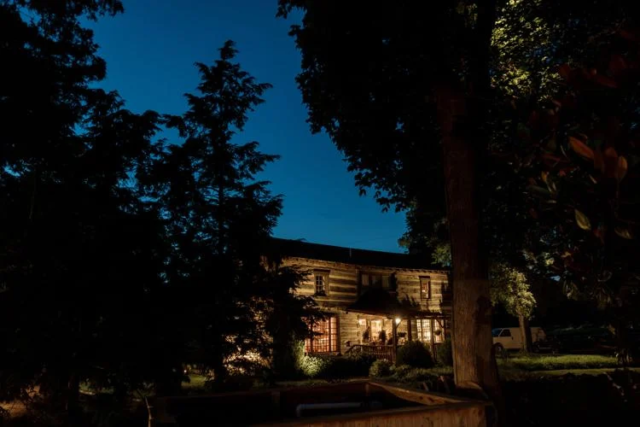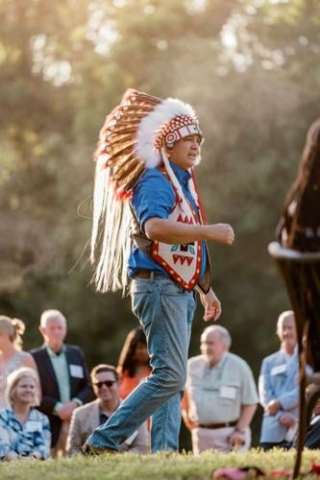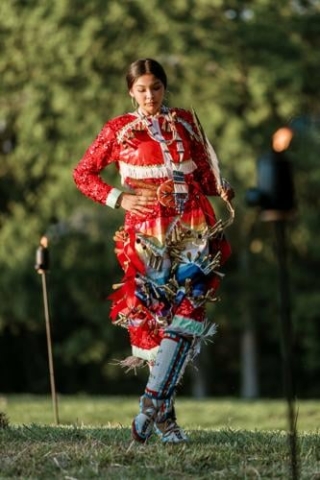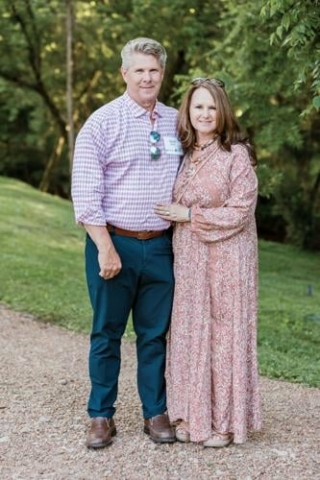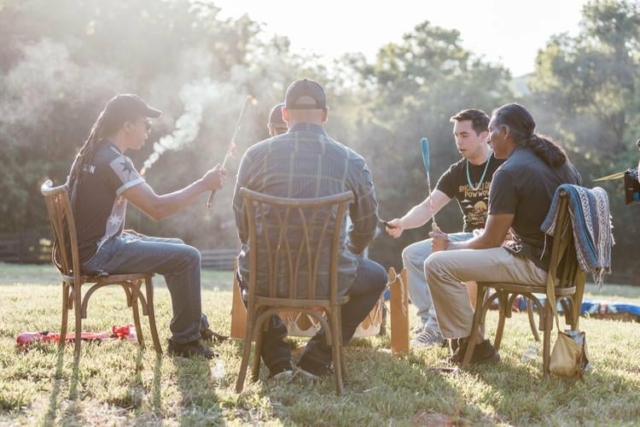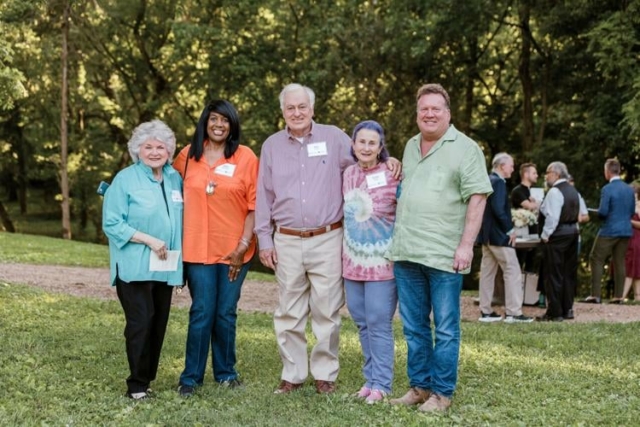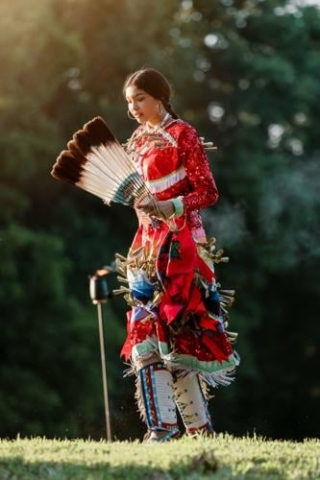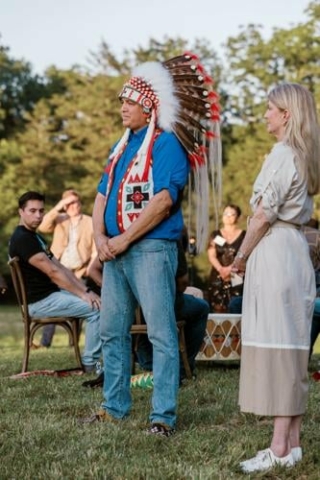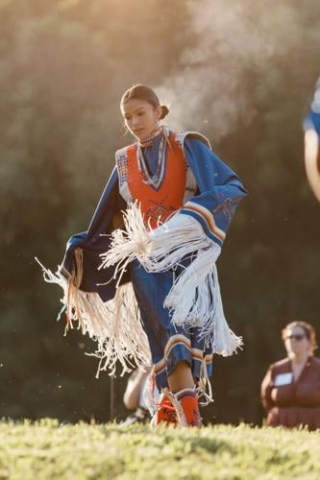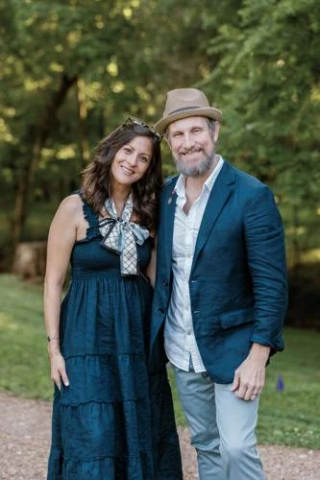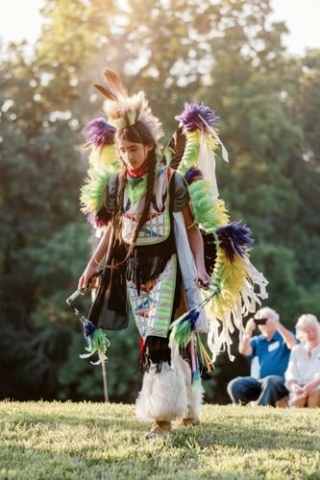This article is featured in the July 2024 issue of nFOCUS in both the print version and online.
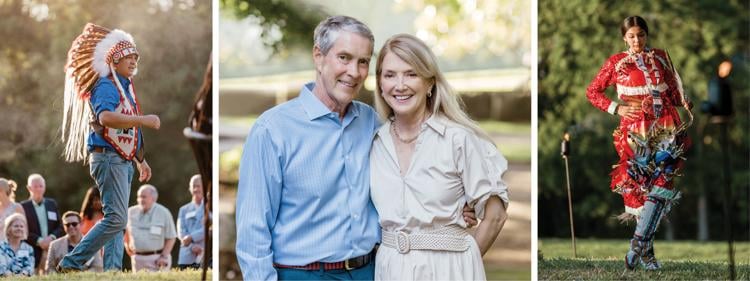
Entertaining a group of dedicated preservationists is no small task — especially when the group is made up of National Trust for Historic Preservation members. Local preservationists recently hosted the NTHP board of directors, treating them to home tours, presentations, dinner and a panel discussion at Old Town, Tracy and Bill Frist’s historic home. The evening was a feast for the senses.
The significance of Old Town lies in its past. There is a deep connection to the land, as history whispers from each corner of the sacred space — something Bruce Pittman Inc.’s expert team honored when designing the event. As guests arrived for the evening, they walked past some of the significant structures on the property to a field of Mississippian-era ceremonial mounds (circa 950-1250). There, Charles Robinson, part of the Choctaw Nation, and his family, who also have Lakota and Blackfoot heritage, demonstrated and explained a variety of traditional Native American dances. A drum group, Eagle Nation, joined the dancers, and guests were invited to take part in a Round Dance (also called a Friendship Dance) by joining hands and moving in a ring around the drummers.
Guests then made their way to the dinner tent, where a Flavor Catering buffet offered delicious Southern favorites. Hosts Tracy and Bill took the stage, thanking everyone for supporting preservation and conservation. They then welcomed the evening’s panelists: Bari Beasley, Heritage Foundation of Williamson County CEO; Dwayne Estes, Southeastern Grasslands Institute cofounder and executive director; and Thomas Woltz, Nelson Byrd Woltz Landscape Architects principal. Each speaker brought a unique perspective to the discussion, which was centered around preservation.
Bari emphasized the importance of engaging the community. “Preservation brings people together,” she said. “It is community, it is life.” Meanwhile Dwayne, known by reputation as the prairie preacher, discussed the urgent need to conserve the land. “No matter where I went across the South, 60 to 70% of all the things that need our help the most, from a conservation perspective, are open landscapes,” he said.
Thomas poignantly noted that preservation is ultimately about love. “The land is full of our collective history,” he said. “And somewhere in there, we find a way to love each other and love the land. And I think that is at the core of historic preservation in the landscape.”
